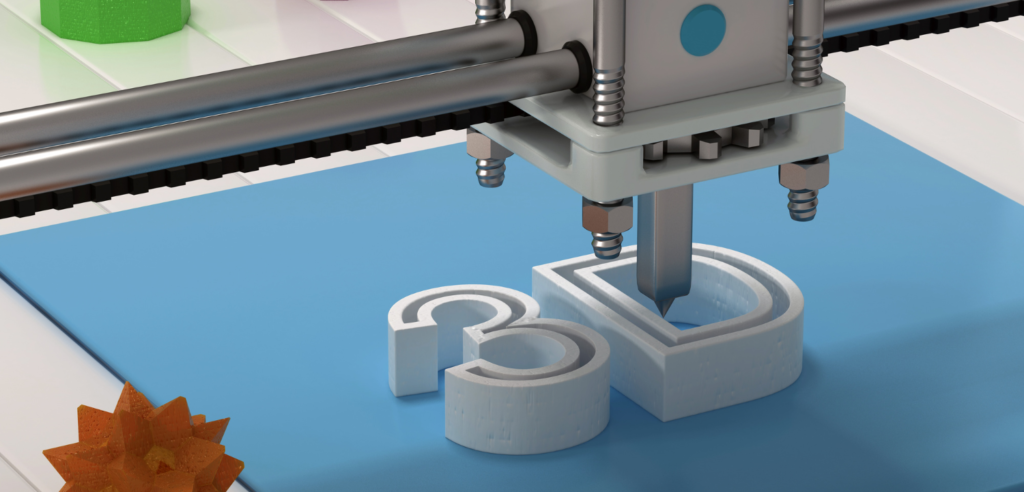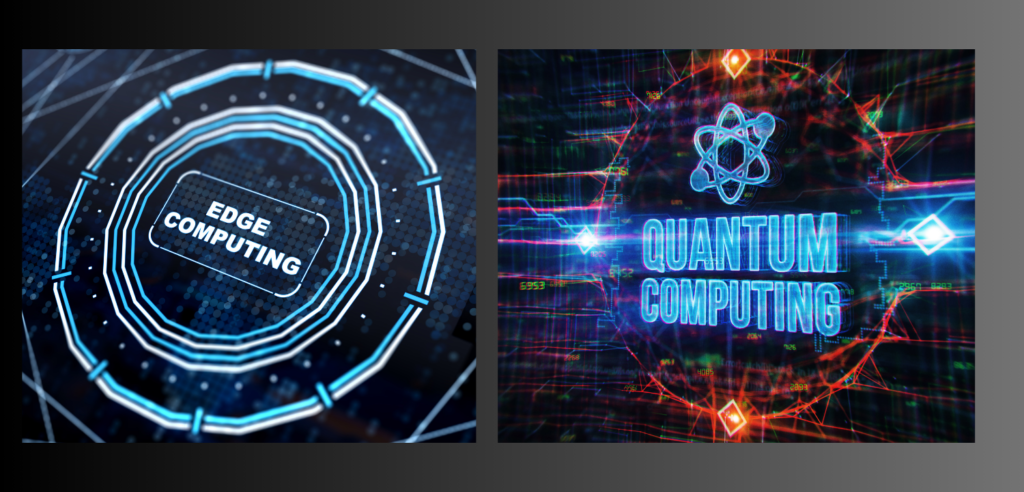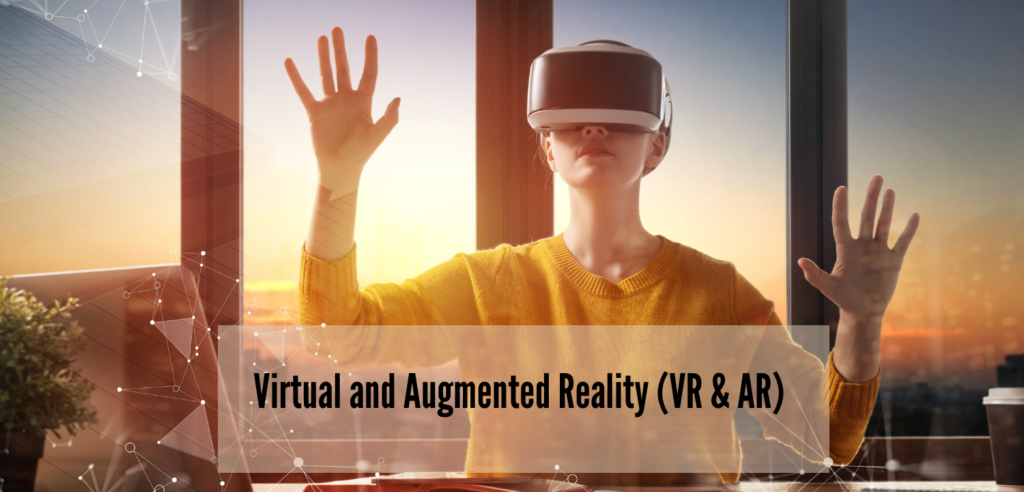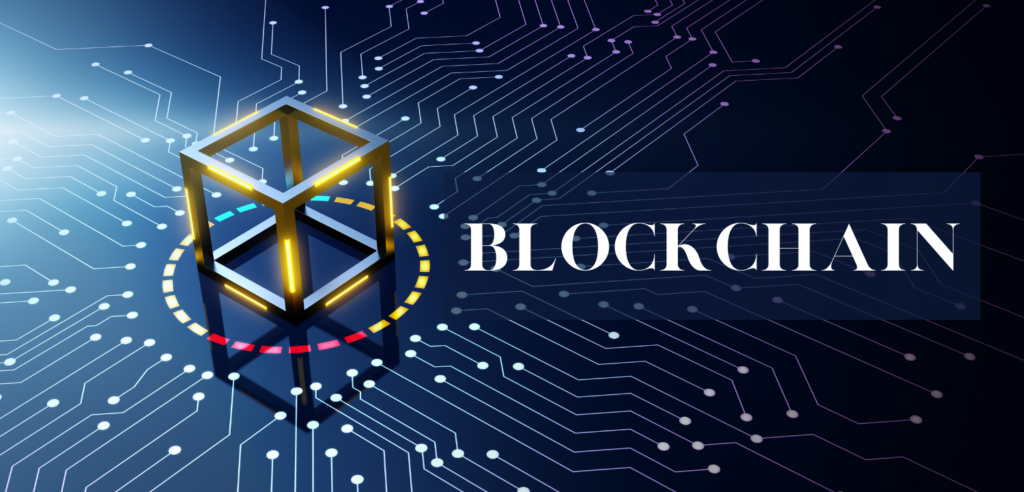As we step into the future, technology continues to shape our world in ways we could only imagine. From the gadgets we use daily to the jobs we pursue, the influence of technology is everywhere. Staying ahead in this fast-paced tech landscape means understanding what’s coming next and preparing for it. Whether it’s the surge in demand for cybersecurity experts to protect our digital lives or the innovative use of 3D printing in healthcare, technology is not just changing; it’s revolutionizing industries and creating new career opportunities.
The job market is evolving with these trends, making it essential for professionals and students alike to keep up. Skills in artificial intelligence, machine learning, and renewable energy are becoming more valuable than ever. But what does all this mean for you? Simply put, to thrive in the coming years, keeping an eye on these technology trends and the careers they spawn is crucial. This journey into the future of technology and careers in 2024 starts with an open mind and the willingness to learn and adapt. Let’s dive in and explore what the future holds, ensuring you’re not just ready but excited for what’s to come.
As we look towards 2024, several technology trends stand out, promising to reshape industries and open up new career paths. Let’s explore these trends to understand their impact and the opportunities they present. Here are the Top Technology Trends of 2024:
1. Cybersecurity and Its Growing Importance
In the digital era, the significance of cybersecurity has skyrocketed, transforming it from a niche IT concern into a cornerstone of corporate and national security strategies. As the digital footprint of businesses and individuals expands, so does the attack surface for malicious actors, making cybersecurity an essential defense against data breaches, identity theft, and other cyber threats.
Cybersecurity’s importance is underscored by the increasing sophistication and frequency of cyberattacks. Hackers are continually evolving their tactics, employing ransomware, phishing, and advanced persistent threats to exploit vulnerabilities. This landscape necessitates a robust cybersecurity posture that includes both preventive measures and active monitoring to detect and respond to threats swiftly.

The field of cybersecurity is broad, encompassing various roles each with its focus area:
- Cybersecurity Analysts scrutinize network traffic and logs to identify unusual patterns that could indicate a security breach.
- Penetration Testers, or ethical hackers, proactively attack systems (with permission) to find vulnerabilities before malicious hackers can exploit them.
- Security Engineers design and implement secure network solutions to protect against a wide array of cyber threats.
Moreover, the rise of Internet of Things (IoT) devices and cloud computing has expanded the cybersecurity challenge, introducing new vulnerabilities and increasing the potential impact of breaches. Protecting these diverse and distributed digital assets requires sophisticated encryption techniques, secure access controls, and ongoing vigilance.
The growth of cybersecurity has also led to a surge in demand for skilled professionals. Organizations seek individuals who can navigate the complex landscape of regulations, such as GDPR in Europe and various privacy laws worldwide, and who can implement cutting-edge security technologies to protect sensitive information.
As cybersecurity continues to evolve, staying informed about the latest threats and emerging technologies is crucial. Continuous learning and adaptation are key for professionals in this field, as the strategies and tools that were effective yesterday may not suffice tomorrow. The ongoing challenge of cybersecurity is not just a technical issue but a strategic one, integral to the operational and reputational integrity of organizations in every industry.
2. The Revolution of 3D Printing
The revolution of 3D printing marks a significant shift in manufacturing, healthcare, and even in our daily lives. Initially conceptualized as a tool for rapid prototyping, 3D printing technology has evolved far beyond its original purpose, becoming a key driver in the push towards customization, reduced waste, and increased efficiency in production processes.

3D printing, or additive manufacturing, works by layering materials—plastics, metals, and even living cells—to create objects from digital models. This process allows for the creation of complex and intricate designs that would be difficult, if not impossible, to achieve with traditional manufacturing methods. The implications of this technology are vast and varied:
- In Healthcare: 3D printing is revolutionizing the medical field by providing customized solutions such as prosthetic limbs, dental devices, and even bio-printed tissues and organs. This customization ensures a better fit, improved functionality, and greater comfort for patients.
- In Manufacturing: The technology is streamlining the production process by enabling companies to produce parts on demand, reducing inventory costs, and minimizing waste. It’s also fostering innovation in design and material use, opening up new possibilities for engineers and designers.
- In Consumer Products: From custom jewelry to tailored footwear, 3D printing is allowing consumers to personalize their purchases like never before. It’s also making its way into homes, with affordable printers enabling hobbyists and entrepreneurs to experiment and create from the comfort of their own spaces.
- Environmental Impact: By reducing material waste and allowing for the use of eco-friendly materials, 3D printing presents a more sustainable option compared to conventional manufacturing methods. It also has the potential to decrease the carbon footprint associated with the production and transportation of goods.
- Education and Research: In educational settings, 3D printing is becoming an invaluable tool for teaching engineering, design, and technology, providing students with hands-on experience in creating and innovating. Researchers are also leveraging the technology to prototype new inventions and explore solutions to complex problems more efficiently.
The ongoing advancements in 3D printing technology, such as improvements in speed, material diversity, and precision, continue to expand its applications. As the technology matures, it holds the promise of further transforming industries, enhancing customization, and potentially democratizing manufacturing by making it accessible to a wider audience. The future of 3D printing seems bound only by the limits of imagination, positioning it as a pivotal technology in the march towards a more innovative and personalized world.
3. Genomics: Unraveling DNA for Better Health
Genomics, the comprehensive study of an organism’s entire set of DNA, including all of its genes, is a field that promises to revolutionize our approach to health and medicine. By analyzing the genetic makeup of individuals, genomics enables the development of personalized medical treatments, making it possible to tailor healthcare to the unique genetic profile of each person.

The impact of genomics on healthcare is profound:
- Personalized Medicine: Genomics facilitates personalized medicine, where treatments and medications are optimized for an individual’s genetic makeup. This approach increases the efficacy of treatments while reducing side effects, leading to better health outcomes.
- Disease Prevention: Through genetic screening, genomics can identify individuals at high risk for certain diseases, allowing for early intervention or lifestyle changes to prevent the onset of the condition.
- Understanding Genetic Disorders: Genomics helps in understanding the genetic basis of diseases, leading to the development of new treatments and therapies to manage or cure these conditions.
- Cancer Treatment: In cancer treatment, genomic analysis is used to identify specific mutations in cancer cells, allowing for targeted therapies that specifically attack the cancer cells without harming healthy cells.
The field of genomics relies on sophisticated technologies and computational tools to analyze and interpret the vast amounts of data generated by sequencing DNA. This data not only provides insights into the genetic factors that contribute to health and disease but also helps in the discovery of new drug targets.
As genomics continues to evolve, it is set to transform the healthcare industry further by enabling more precise, effective, and preventive healthcare solutions. The promise of genomics extends beyond individual health improvements to include advancements in public health and the development of global strategies to combat diseases on a large scale. The journey into the genomic era is just beginning, with ongoing research and technological advancements paving the way for a future where genomics shapes the cornerstone of medical science and treatment.
4. Sustainable New Energy Solutions
The drive towards sustainable new energy solutions is a pivotal aspect of global efforts to combat climate change and reduce our dependence on fossil fuels. This shift not only aims to preserve our environment but also seeks to revolutionize the way we produce, distribute, and consume energy. Sustainable energy encompasses a range of technologies and practices designed to harness natural resources like the sun, wind, and water, thereby offering cleaner, more efficient, and inexhaustible sources of power.

- Solar Power: Solar energy, derived from capturing sunlight and converting it into electricity, stands at the forefront of sustainable energy solutions. Advances in photovoltaic technology and solar panel efficiency have made it more accessible and cost-effective, empowering homeowners, businesses, and utilities to generate clean energy.
- Wind Energy: Wind power harnesses the energy from wind flow to turn turbines, generating electricity. Wind farms can be found both onshore and offshore, contributing significantly to reducing carbon emissions. The scalability of wind energy projects makes them a crucial component of the sustainable energy landscape.
- Hydroelectric Power: Utilizing the flow of water through dams to generate electricity, hydroelectric power is a seasoned and potent form of renewable energy. It’s characterized by its ability to supply large amounts of electricity, its relatively low-cost post-installation, and its flexibility in adjusting to demand fluctuations.
- Geothermal Energy: Tapping into the Earth’s internal heat, geothermal energy is used for heating and cooling purposes as well as electricity generation. This resource, abundant in certain regions, offers a constant and reliable energy source, further diversifying the sustainable energy mix.
- Biomass and Biofuels: Organic materials such as plant and animal waste are converted into biomass energy through various processes. This type of energy can replace fossil fuels in heating, electricity, and even in transportation when converted to biofuels. Biomass and biofuels are renewable and can reduce greenhouse gas emissions, although their sustainability is dependent on careful resource management.
- The Role of Energy Storage: As renewable energy sources like solar and wind are intermittent, energy storage solutions such as batteries and pumped hydro storage play a critical role in ensuring a steady and reliable energy supply. Advances in storage technologies are key to the broader adoption of renewables.
- Challenges and Opportunities: Transitioning to sustainable energy presents challenges, including the need for infrastructure development, investment in research and technology, and overcoming regulatory and market barriers. However, the shift also offers significant opportunities for economic growth, job creation, and environmental sustainability.
The pursuit of sustainable new energy solutions is a dynamic and evolving field, reflecting a global consensus on the need for a cleaner, more sustainable energy future. As technology advances and the costs of renewable energy sources continue to decline, the potential for widespread adoption grows, signaling a promising direction toward achieving energy sustainability and environmental conservation.
5. Robotic Process Automation (RPA)
Robotic Process Automation (RPA) is transforming the way businesses operate by automating routine and repetitive tasks that were traditionally performed by humans. This innovative technology utilizes software robots, or “bots”, to execute predefined tasks within software applications, such as entering data, processing transactions, and even responding to simple customer service inquiries. The automation of these tasks not only enhances efficiency and productivity but also allows human employees to focus on more complex and strategic activities that require human judgment and creativity.

Key Features of RPA:
- Accuracy and Consistency: RPA bots are programmed to follow specific rules and processes, ensuring tasks are performed accurately and consistently without the errors common in manual processing.
- Scalability: As business needs change, RPA systems can be quickly scaled up or down to handle varying volumes of work, providing flexibility and responsiveness to demand fluctuations.
- Integration: One of the strengths of RPA is its ability to work with existing IT infrastructure and applications without the need for extensive customization or changes. This makes RPA a cost-effective solution for improving processes.
- Speed: Tasks that would take humans minutes or hours to complete can be done by RPA bots in seconds, significantly speeding up business processes and improving service delivery.
Applications of RPA:
- Customer Service: Automating responses to common inquiries and processing basic customer requests, thereby improving response times and customer satisfaction.
- Finance and Accounting: Automating invoice processing, payroll, and financial reporting tasks to increase efficiency and reduce the risk of errors.
- Human Resources: Automating employee onboarding processes, benefits administration, and compliance reporting to streamline HR operations.
- Supply Chain Management: Automating order processing and shipment tracking to enhance the efficiency of supply chain operations.
Challenges and Considerations:
While RPA offers numerous benefits, businesses must also consider challenges such as the upfront investment in technology, the need for ongoing management and optimization of bots, and potential resistance from employees concerned about job displacement. However, by approaching RPA as a tool to augment the human workforce rather than replace it, businesses can leverage the technology to enhance employee satisfaction, drive efficiency, and create competitive advantage.
As RPA continues to evolve, incorporating advanced technologies such as artificial intelligence (AI) and machine learning, its potential applications and benefits are expected to expand further. This ongoing development signals a promising future for RPA in driving digital transformation and operational excellence across various industries.
6. Edge and Quantum Computing
Edge computing and quantum computing are two technological innovations at the forefront of reshaping the digital landscape, each in its unique way.

Edge Computing
Edge computing refers to the decentralization of computing resources, pushing data processing closer to the location where it is needed, at the “edge” of the network. This approach significantly reduces latency, increases speed, and enhances the efficiency of data handling for devices and applications that require real-time processing.
- Applications: Edge computing is pivotal in scenarios where quick data processing is critical, such as autonomous vehicles, IoT devices, smart cities, and real-time analytics in various industries. By processing data locally, these systems can react more quickly than if they had to send data back to a central data center or cloud for processing.
- Benefits: The primary advantage of edge computing is its ability to reduce latency and bandwidth use, leading to faster and more efficient operations. It also enhances privacy and security by localizing data processing and storage, reducing the exposure to potential breaches during transit.
Quantum Computing
Quantum computing represents a leap forward in computing power, utilizing the principles of quantum mechanics to process information in ways fundamentally different from traditional computing. Quantum computers use quantum bits, or qubits, which can represent and store information in a vast array of states, enabling them to perform complex calculations at unprecedented speeds.
- Applications: Quantum computing has the potential to revolutionize fields that require processing large datasets and performing complex calculations, such as cryptography, drug discovery, financial modeling, and climate research. It could, for example, dramatically reduce the time needed to develop new medications or solve intricate optimization problems.
- Challenges: Despite its potential, quantum computing is still in the early stages of development. Challenges include creating stable qubits, scaling up the technology to make it commercially viable, and developing new algorithms designed for quantum processing.
Comparing Edge and Quantum Computing:
While both technologies offer significant advancements, they serve different purposes. Edge computing is about optimizing data processing to reduce latency and increase efficiency in networked environments. In contrast, quantum computing is about exponentially increasing computational power to tackle problems beyond the reach of classical computers.
- Implementation: Edge computing can be implemented with existing technology and is already being deployed in various industries. Quantum computing, however, remains largely experimental, with practical applications still under development.
- Impact: Both technologies have the potential to transform industries, but they do so in different ways. Edge computing makes existing applications faster and more reliable, while quantum computing could solve previously intractable problems.
As technology continues to evolve, both edge and quantum computing will play pivotal roles in shaping the future of digital innovation, each unlocking new capabilities and opportunities across a wide range of applications.
Virtual and Augmented Reality (VR & AR)
Virtual Reality (VR) and Augmented Reality (AR) technologies are significantly altering how we interact with digital content, merging the physical and digital worlds in immersive and innovative ways.

Virtual Reality (VR) creates a fully immersive digital environment that replaces the user’s real-world surroundings. VR users typically wear a headset that covers their eyes and sometimes use hand controllers to interact with the digital environment. This technology is widely used for gaming, offering an immersive experience that transports players into virtual worlds. Beyond entertainment, VR has practical applications in training simulations for pilots, doctors, and military personnel, providing a safe and controlled environment for practicing skills and procedures.
Augmented Reality (AR), on the other hand, overlays digital information onto the real world. Unlike VR, which creates a completely virtual environment, AR enhances the real world by adding digital elements to it, visible through devices such as smartphones, tablets, or AR glasses. This technology has found applications in various fields, including education, where it can bring historical events to life; in retail, offering virtual try-ons of clothes or makeup; and in navigation, providing real-time, overlay directions on smartphone screens.
The Impact and Potential of VR and AR:
- Education and Training: Both VR and AR offer unique ways to engage learners and provide hands-on training experiences without the physical limitations of traditional classrooms or training environments.
- Healthcare: In healthcare, VR is used for patient rehabilitation and therapy, while AR assists surgeons during procedures by overlaying crucial patient data in their field of view.
- Real Estate and Architecture: VR allows potential buyers to tour properties virtually from anywhere in the world, and AR helps architects visualize building designs in real environments.
- Retail and Marketing: Retailers use AR to enhance the shopping experience, allowing customers to visualize products in their own space before making a purchase decision.
Challenges and Future Directions:
While VR and AR technologies offer tremendous potential, they also face challenges. These include the need for more affordable and comfortable hardware, overcoming motion sickness in VR, and developing more intuitive user interfaces. As technology advances, future developments in VR and AR are expected to address these challenges, leading to wider adoption and new applications across industries.
VR and AR are not just reshaping entertainment and gaming; they’re revolutionizing training, education, healthcare, and retail, among other fields. As these technologies continue to evolve, they promise to unlock even more immersive and interactive experiences, blurring the lines between the digital and physical worlds even further.
Blockchain Beyond Cryptocurrency
Blockchain technology, best known for underpinning cryptocurrencies like Bitcoin, has far-reaching applications beyond the realm of digital currency. Its core features—decentralization, transparency, and security—make it an attractive solution for various industries seeking to enhance efficiency, reduce fraud, and streamline operations.

- Decentralization: Unlike traditional databases managed by a central authority, blockchain distributes its data across a network of computers, making it highly resistant to tampering and fraud. This decentralization can revolutionize how data is shared and stored in sectors like finance, healthcare, and supply chain management.
- Transparency and Security: Every transaction on a blockchain is recorded on a block and across multiple copies of the ledger that are spread over many nodes (computers), making it nearly impossible to alter transaction histories. This level of transparency and security is appealing for applications that require unalterable records, such as voting systems, identity verification, and legal contracts.
Beyond Cryptocurrency: Applications of Blockchain
- Supply Chain Management: Blockchain can provide a transparent and unchangeable ledger of goods movements, from manufacturing to delivery, ensuring the authenticity and traceability of products. This can significantly reduce costs related to documentation and audits, and help combat counterfeit goods.
- Healthcare: Patient records can be securely stored on the blockchain, giving patients control over their data and allowing for easy and secure access by authorized healthcare providers, potentially improving the efficiency and accuracy of diagnosis and treatment.
- Smart Contracts: These are self-executing contracts with the terms of the agreement directly written into code. They automatically enforce and execute the terms of a contract when conditions are met, potentially eliminating the need for intermediaries in various legal and business processes.
- Digital Identity: Blockchain can offer a secure and unforgeable means of managing digital identities, with applications ranging from online account logins to national identity systems. This can significantly reduce identity theft and fraud.
- Voting Systems: By providing a secure and transparent way to tally votes, blockchain technology could revolutionize voting and election processes, making them more accessible, reliable, and fraud-resistant.
Challenges and Future Prospects
Despite its potential, blockchain faces challenges, including scalability issues, energy consumption (particularly with proof-of-work systems), regulatory hurdles, and the need for broader adoption and understanding. However, ongoing advancements in blockchain technology, such as the development of more energy-efficient consensus mechanisms and the exploration of hybrid centralized/decentralized models, continue to address these challenges.
As industries begin to recognize the potential benefits of blockchain beyond cryptocurrencies, we are likely to see its innovative applications continue to grow, potentially transforming the foundational aspects of how businesses and governments operate. The journey of blockchain is just beginning, with its full potential yet to be realized in the coming years.
Conclusion
These emerging technology trends of 2024 are not just shaping the industries but are also carving out new career paths for professionals worldwide. Each of these trends carries with it a promise of innovation, efficiency, and a new wave of job opportunities that align with the digital transformation of our world. Whether it’s securing digital assets, innovating with 3D printing, exploring the depths of genomics, or harnessing the power of renewable energy, the future is ripe with potential for those ready to dive in and make their mark. The journey into these trends is not just about technological curiosity; it’s about envisioning and building a future that embraces the full spectrum of human creativity and ingenuity.










